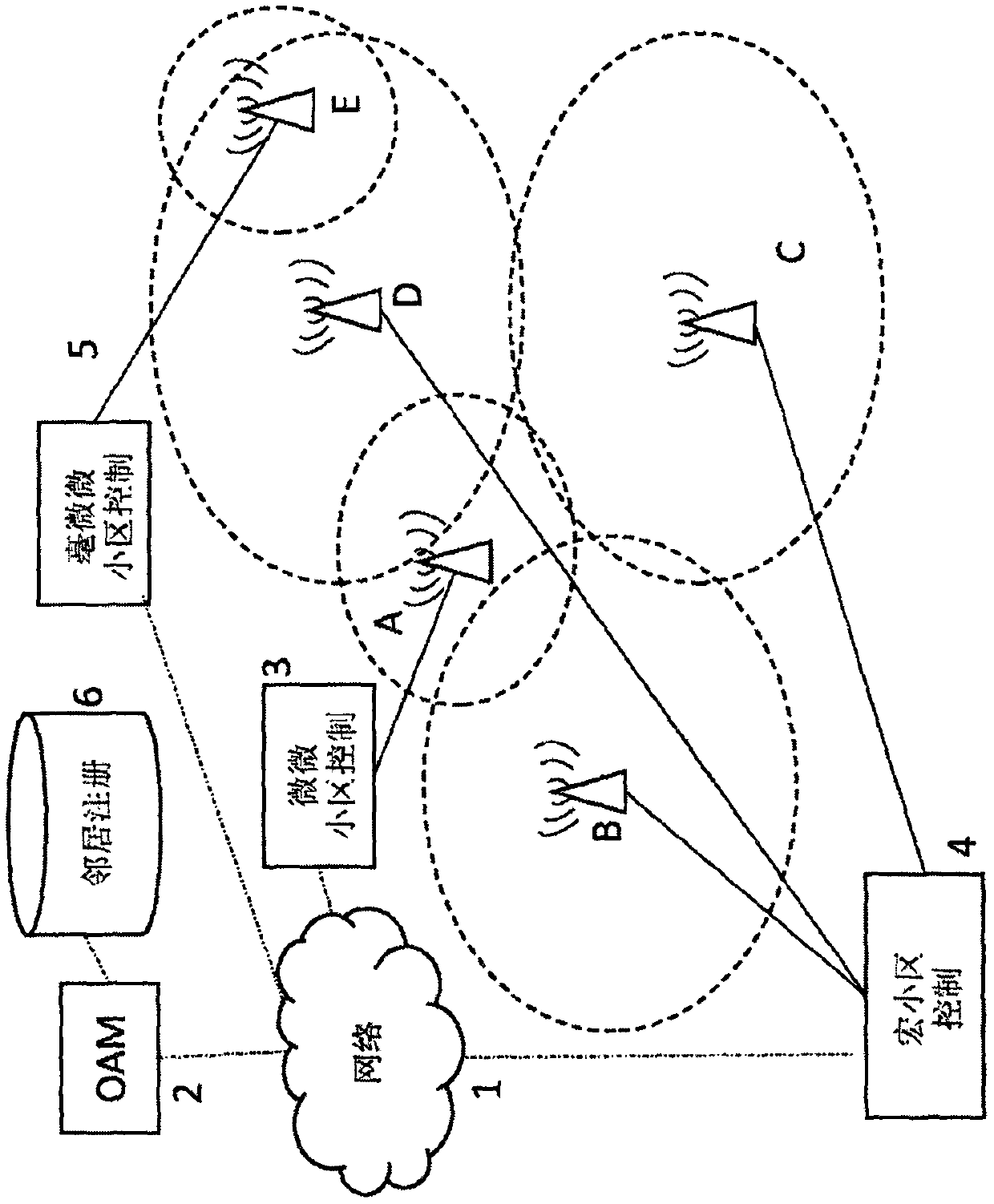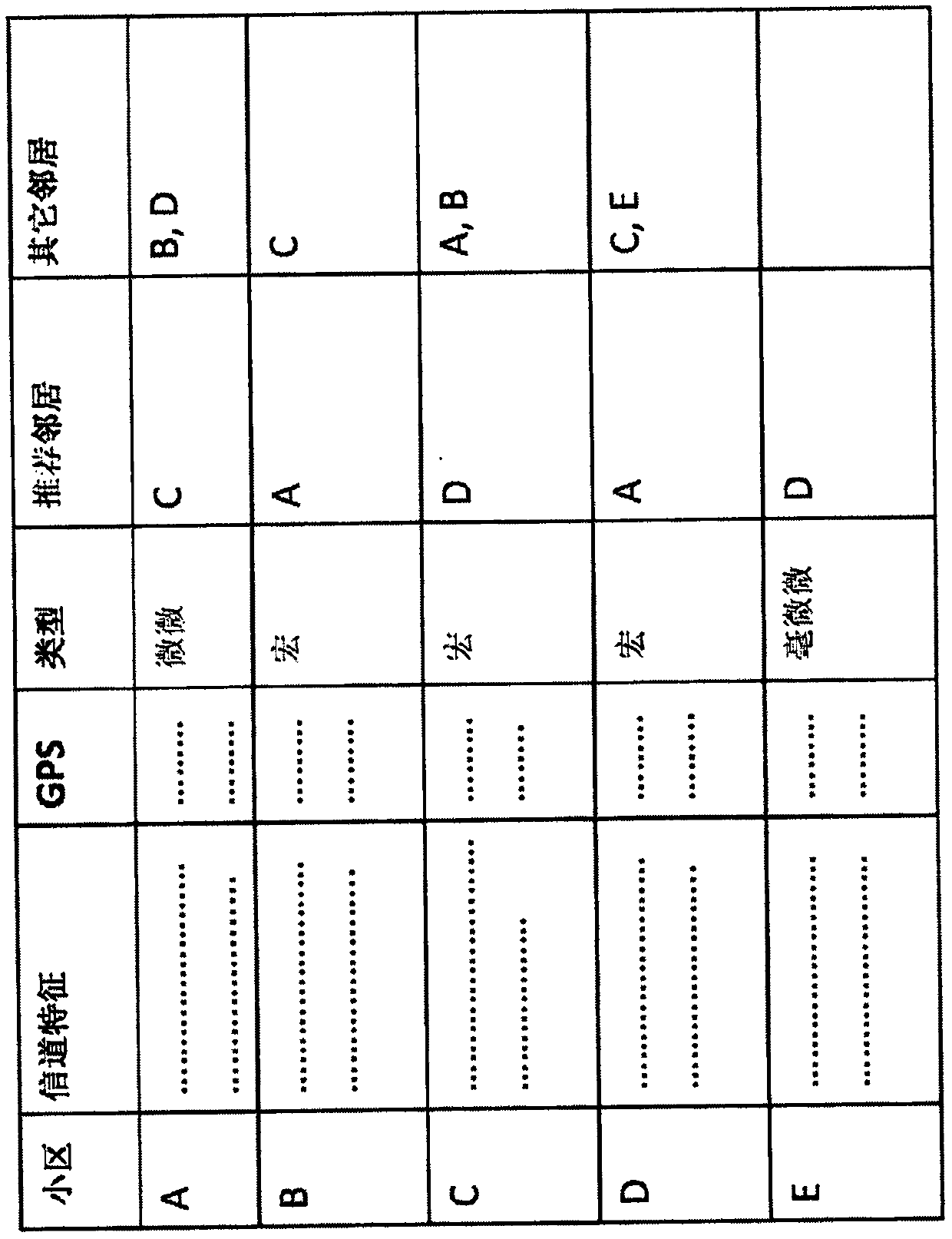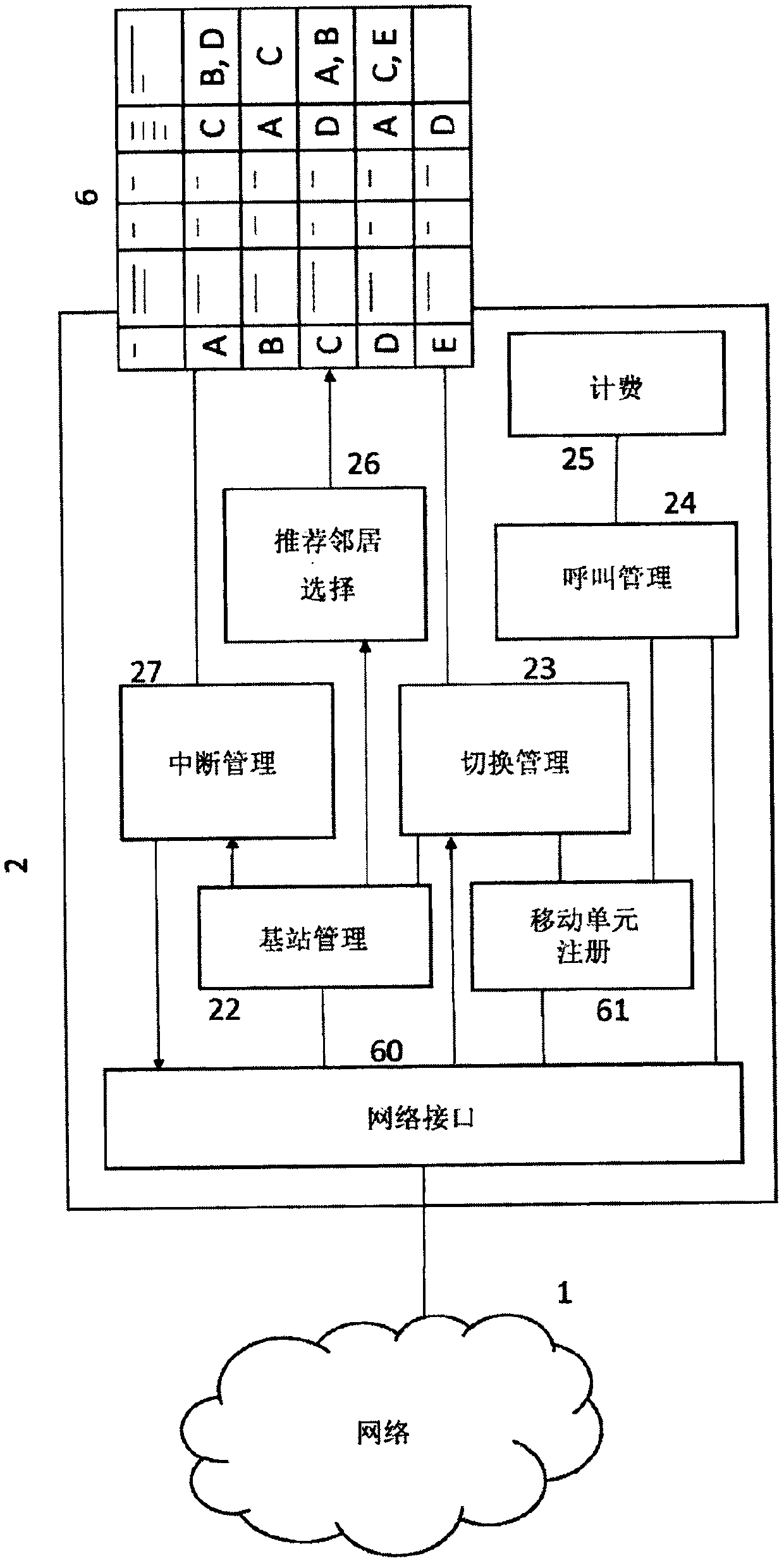Fault detection method, cellular base station and cellular communication management processor
A fault detection and processor technology, applied in wireless communication, network topology, electrical components, etc., can solve problems such as increasing service interruption duration and delaying the start of recovery process
- Summary
- Abstract
- Description
- Claims
- Application Information
AI Technical Summary
Problems solved by technology
Method used
Image
Examples
Embodiment Construction
[0048] The embodiments to be described below generally describe remedial actions to be taken after an interruption has occurred. It should be clear that if the base station in question has not completely failed, it may be able to participate in remedial measures initiated by its recommended neighbors.
[0049] figure 1 A simplified cellular network is depicted having five base stations (labeled A, B, C, D, and E), each with a respective coverage area generally delineated by a respective dashed line. (It should be clear that signal quality gradually degrades with distance and may be affected by different fading and interference levels at different times, so there is no well-defined boundary for the area covered by a particular base station). Base stations are of various types and have different backhaul connections with different control centers, which can communicate with each other through a core network 1 and are coordinated by an operation, administration and maintenance (...
PUM
 Login to View More
Login to View More Abstract
Description
Claims
Application Information
 Login to View More
Login to View More - R&D
- Intellectual Property
- Life Sciences
- Materials
- Tech Scout
- Unparalleled Data Quality
- Higher Quality Content
- 60% Fewer Hallucinations
Browse by: Latest US Patents, China's latest patents, Technical Efficacy Thesaurus, Application Domain, Technology Topic, Popular Technical Reports.
© 2025 PatSnap. All rights reserved.Legal|Privacy policy|Modern Slavery Act Transparency Statement|Sitemap|About US| Contact US: help@patsnap.com



